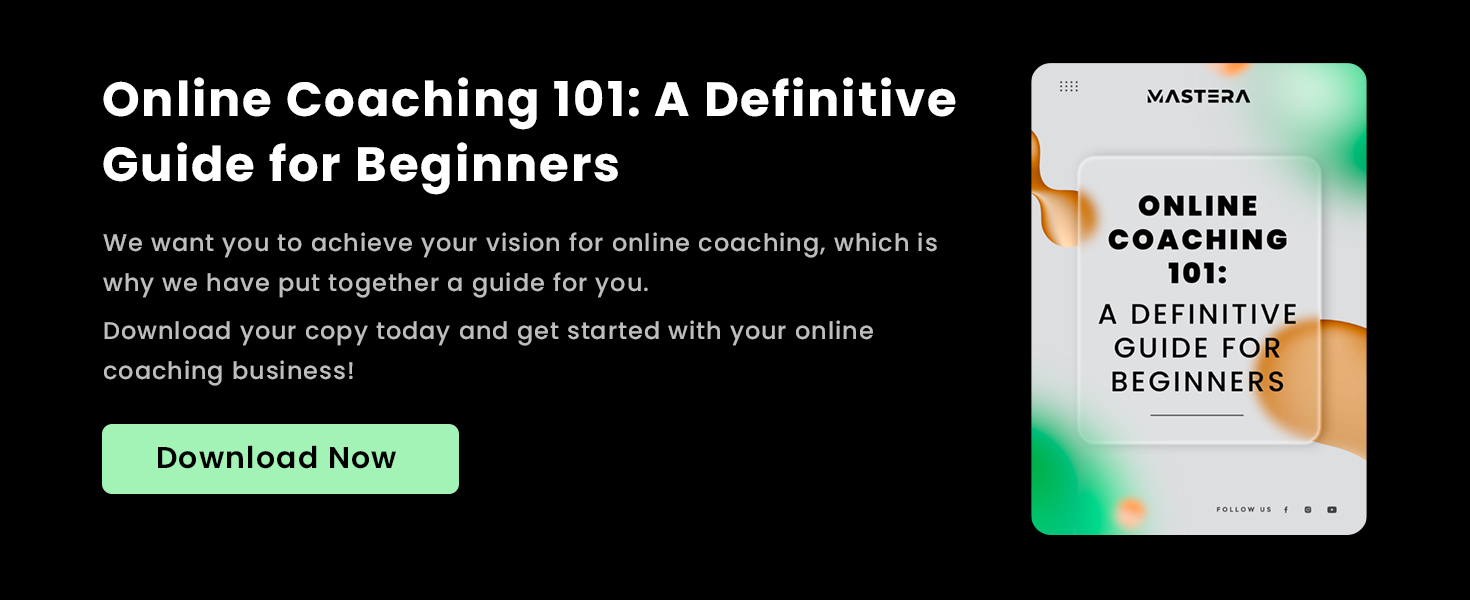Congratulations!
You have started the journey of monetizing your skills and passion. There’s no better time than today to build and scale your online fitness, cooking, teaching, or music business. If you have already created an online course and wondering how to price your online course. Then keep reading this article, and find out the best way to price your online classes.
Skill development has seen a massive shift to the digital medium. And that’s why many creators like yourself are now channeling their energies towards acing this medium. At the start of 2020, this was nothing short of wishful dreaming, where teaching was more-or-less a day job, only to happen via offline channels.
Still, in what the months followed and what millions of people have witnessed- there is a seismic shift. What started because of the lack of alternatives now has people realizing that digital learning is excellent! A research revealed that 85% of online students, who previously took both face-to-face and online classes, felt their distance learning experience was the same or better compared to a classroom-based course:
- 37% felt distance learning was better than face-to-face instruction
- 48% felt distance learning was about the same as face-to-face instruction
For thousands of people, learning is as simple as- Pick a skill, search for the most attractive course from a reliable teacher, pay for it, and voila, you are cultivating a new skill set—no more worry of travel or logistics- simple learning from the convenience of homes.
Now for a creator like yourself- you have a fascinating chance to build a brand, business, and something you can be proud of. Pick a platform, create a course, start online classes, and yes, potential financial freedom.
While the workflow looks relatively simple at the outset, it becomes a bit trickier as you start peeling each layer and work on the finer details. In this blog post, we will help you unravel the pricing mysteries- what to do, what not to do, what are the best practices, how to price your online course and everything else.
To start with, let us acknowledge the time and effort that goes into creating online courses. The creation methodology in itself affects the cost variable, in turn impacting the course pricing.
How To Price Your Online Course?
Here’re the specific steps you would be following:
- Analyzing the market demand, competition (what other courses are available on the subject and how are they promoted), and content analysis (is there content ready to use, and if not — how much will it cost to produce it)
- Designing the course materials following the instructional design best practices
- Development of the materials such as videos, tutorials, etc.
- Implementing and hosting the online course content on a digital platform
- Evaluating and monitoring the course performance, feedback, and comments of learners; modifying the course content to reach maximum ROI
From research to optimizations, every step directly plugs into the price points for your courses. One recent study highlighted that:
- 1 hour of ready online learning content takes 100-160 hours to produce
- 1 hour of ready online content costs $8,150-$36,205 ($22,178 on average) to produce (if the job is done by skilled contractors, the costs can be lowered by up to 30%)
If you start pricing your online course off in the $50.01-$100.00 range, your classes will fall into the mass-market category. If you want to aim higher and try to hit that golden goose, your baseline pricing should fall into the $100.01-$150.00 range.
Pricing your classes is a tough nut to crack. There are a lot of factors at play- such as, are you just starting your business? Do you have a dedicated audience? What is your niche? How crowded is the competition?
So on and so forth. But the good news is, irrespective of your niche, few baseline strategies never go out of work.
Because you wish to bootstrap your classes, justify your expenses and effort- there is no question about generating more revenue. After all, it impacts everything. Therefore, pricing your classes requires more thought and a bit of experimentation. There is no bulls’ eye method but more of testing the waters.
For beginners, it is tempting to charge less or give away freebies. This could be attributed to a lack of confidence. Whatever be the case, competing solely on lower prices is never a sustainable strategy for scaling businesses.
First of all, you make little or no money to fund marketing or brand-building initiatives. Your class experience could be subpar. After you exhaust your investments, it becomes challenging to go on with your online classes.
There will always be a competitor who can offer even a lower price and attract your customer base. The downside of lower pricing is immense and can be simply ruled out.
How about its opposite? If you charge an exponential amount- then shut your business down, for you can scare your student away with your exorbitant fee.
Another major challenge in pricing the course high is that there are a lot of resources online teaching the same thing that you want to teach in your course. From articles to ebooks, YouTube videos, audio books, white papers, SlideShare presentations, and more.
Following this argument, you’re probably asking yourself why someone would willingly pay a high price for your course when there are so many free and inexpensive resources that they can utilize instead.
Well Yes. You would have guessed it by now. There lies a sweet spot, not necessarily a median, where you surely make enough money to build a dedicated audience base and grow your reach. And that amount is always more than what you wish to start with!
Reasons why Online Classes Fetch Premium Prices
Let’s take a look at your target audience. You want someone who passionately wishes to learn from you. That person needs to be committed and passionate, like yourself. It is her/him who is going to pay you for your classes and stick with them.
If your online classes are free- they invite people who aren’t sincere. They might have joined your course just because it was a giveaway. Once enrolled, they are going to drop out as soon as you jack up your prices.
The next segment- People looking for cheap courses. People in this segment are always hunting for lower prices. They will jump ships as soon as your competitor slashes down their fees. Again, there is questionable dedication in this class of people.
Now your audience segment- People who will pay a premium to learn from you.
Education or skill development does not happen overnight. It is a test of patience and grit. Someone dedicated enough to pay a higher price and enroll- they are going to stick and become your loyal followers.
People aren’t shy of investing in their betterment. Check the offline alternatives for your profession- their fee structure is again at the higher end. Just because online teaching is a new medium doesn’t mean that it will fetch lower prices.
No matter what price you sell your course, someone out there will always be able to beat it anyways. Competing on price alone should not be your focus. Customers that are loyal to the one with the lowest price are not the kind of customers you would want to serve.
Don’t waste your time trying to entertain these people. Rather focus on marketing your course to people who will respect the course for the value it delivers.
You have identified your audience. The next step is to justify your prices.
Teaching something specific to your audience is a formula for premium prices. It could be your area of expertise, content delivery, class structure, student experience, etc. The differentiator is going to improve your class stickiness and fetch a premium.
Once you have identified that, you need to figure out the value your customers will get after enrolling in your classes. It could be time and money savings, career enhancements, or peace of mind. There’s always a value add. And your task is to quantify it. Tell your customers of this value-add and justify why they should opt for your classes.
Finally, you can bundle your classes with support material, free consultations, dedicated support, and other offerings that are unique to you and have no other viable alternative.
The pricing game is a lot about perception. If you put yourself in your customer’s shoes, you will realize that a rational comparison with other instructors is exhausting! It would be like comparing apples with oranges. So your task is to work on your perception. The better your sessions are packaged, the better you justify your prices.
A lower price instantly decreases your value and puts a question mark on your ability. Whereas in a premium scenario, you are perceived as an expert. And yes, you have all the money to better package your classes.
Getting Real with Mathematics [Pricing Classes]
We have made a case for premium pricing. Now focus on your income goals. Say you’re hoping to make $3,000 with your online classes. If you charge $150, you need 20 people to enroll. But what if you decide to price your course at $300? In that case, you only need 10 people to register.
By putting these goals into place, you can establish a clear picture of just how many people you need to be targeting.
Assume that you have decided on a $150 course, and you need 20 people to enroll. By working on your marketing and outreach strategies that keep your customer acquisition cost lower than $150, you are en route to making a profit.
See if your audience is converting. If you hit the number of required enrollments, then your price point is justified. On the other, if even after communicating all the value, the audience response is mild, then it is a cue for pricing tweaks.
| Online Course Profit Margin Worksheet | |||
| Baseline Pricing: | $150 | If this is your first course, a good place to start is in the 50.01-100.00 range for your baseline pricing. | |
| Total Sales: | 20 | The total number of course sales. | |
| Total Revenue | $3000.00 | ||
| Production Cost: | $320.00 | How much did it cost you to produce your course? What’s your hourly rate and materials cost? Estimates are totally okay here. | |
| Taxes: | $300.00 | If applicable, at what rate will you be taxed? At default, this is set to calculate taxes automatically at a rate of 10.00% | |
| Market Spend | $600 | How much did you spend to get new customers? 20% your revenue is the industry standard. | |
| Net Income: | $1780 | This, and the cells below, will fill in automatically. 🙂 | |
| Net Profit Margin: | 0.59 | ||
| Profit Margin Percentage: | 59.33% | ||
There is another smart method of pricing your courses – by creating tiers or levels. You can split your course – one with $150 and another $250 price tag.
Differentiate and outline the value proposition for the two options. It will help you fine-tune the pricing and understand what is worth for your audience. The premium option can again be bundled with value-added services and made more lucrative.
Final Thoughts
Pricing is always unique to you and your business. There are no copycats. However, with the above guidelines on how to price your online course, you can make a great start and create a profitable business. Remember, once you ace your pricing game, half the job is done.
Let us help you build your virtual classroom. Drop-in a note to us and we will be happy to solve your pricing conundrum.







